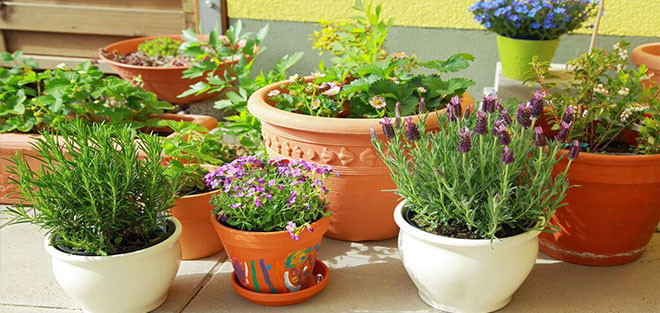Planning Your High Country Garden
Designing a high country garden is a creative and satisfying activity. From start to finish, you have complete control over your project. Yet creating a garden can also be a laborious activity. You might find yourself planting flowers that will never grow in your soil or planting veggies that will never thrive in your yard. By putting a little effort into the planning of your garden, you can ensure your efforts don’t go to waste—and your sanity and your garden stay intact.
What Type of Garden Do You Want?
Before you begin planning to plant, you’ll need to determine what type of garden you desire. Obviously, many types of gardens offer different joys. Do you want to enjoy beautiful flowers in the spring, summer and fall? Do you want to eat the bounty that comes from your yard? Do you want to deter animals or bugs from getting near your home? Perhaps you’d simply like to plant fresh herbs for your recipes or enjoy a few living things indoors.
If you are in the business of planting a garden because you want to enjoy beautiful plants or want to make your yard more attractive, you could consider planting flowers or decorative plants. This is probably one of the post popular types of gardens because most flower gardens are easy to care for. Some flower gardens don’t even need to be “traditional” gardens at all. You could scatter seeds for wildflowers in your meadow. You could plant lilies or violets in your backyard. If you wanted a more traditional garden, you could plant rose bushes around the perimeter of your house or calla lilies in a raised bed. The possibilities are endless.
Many gardeners choose to plant gardens that are practical and yield more than beauty. If this sounds like you, consider a vegetable garden. Vegetables can range from easy to complex to grow. Some vegetables may take years to understand while others will grow like weeds in your backyard. Most vegetable gardens are raised beds that require a little preparation and maintenance; yet you can also grow veggies in containers all year long.
One of the easiest types of gardens is a rock garden, and most novices choose rock gardens. Though it sounds like you’ll be growing rocks, this isn’t the case at all! In fact, you’ll design a garden in your yard that features some of the most attractive rocks. Plants that dwell happily in rock gardens with little maintenance include sunset and hen chicks, dwarf alpine aster and lion’s spore. These plants are very hearty and usually require little weeding or maintenance. They also thrive very well in soils that are rocky—which means you won’t need to head to a gardening store to find fancy soil or mulch!
Herb gardens have become extremely popular over the years thanks to their ability to add pizazz to recipes and make existing gardens more attractive. Herb gardens can be planted in the backyard, in containers on the back porch or in small containers right in your home. They often do not need a lot of maintenance and can be kept all year long. Herbs traditional in high country gardens include dill, basil, thyme, parsley and cilantro. These fragrant herbs also look beautiful on a windowsill or are perfect ways to dress up a bouquet of flowers.
Not all gardens need to be outdoors! An indoor garden can be the perfect solution for the gardener who doesn’t enjoy the best soil conditions outside—or who lives in a small apartment without a backyard. You can enjoy a variety of plants indoors that will make your home look and smell beautiful—and your recipes fresh and delicious. Even small trees can thrive indoors. Dwarf Meyers lemon trees are the perfect tree to keep inside—thanks to their ability to grow in small containers. Many gardeners worry their indoor plants won’t get enough sun. Yet violas and certain types of orchids grow well even in shady environments.
Edible plants can be grown indoors too. Plant tomatoes, cucumbers, peas and herbs inside for fresh produce all year round. You can even grow certain types of lettuce inside too. These types of veggies thrive inside. Plus, you can keep a closer eye on them to pick at the peak of freshness. Herbs and other types of edible shade plants also grow well inside—as long as they can get a little water and sun every day, they will grow like weeds.
Shade vs. Sun
Before you begin plotting and planting, take a look at your grow space. If you plan to grow your plants outside, check to see how much sun hits your grow area each day. If your most optimal space for a garden happens to be in the shade, you’ll need to choose plants that thrive in darker areas. Ferns, brunnera and hostas are all beautiful plants that love the shade. For your vegetable garden, lettuce and root vegetables fare well in the shade. Salad lovers rejoice because cauliflower and broccoli plants also love shadier areas of the garden. You can even grow beans, peas and sprouts in areas of your yard that don’t see too much sun.
Before the Season
Since you’ll need to begin planting certain varieties of plants in certain months, determine what plants you’d like—or think about when you’d like to start planting.
In late winter, you can begin planting annuals. These plants are very hearty and can survive the cold winter weather before planting. Annuals to plant in late winter include calendula, bachelor button and wisteria. These plants should be started in containers inside before planting in early spring after the last frost.
In early spring, you can start planting your flowers that will pop up over the summer. Many of these flowers won’t fare well in colder weather, so make sure the last frost has passed before planting them. These flowers include cosmos, dianthus and nicotiana.
You should consider starting some of your vegetables inside during the winter too. As long as your home is warm enough inside, your edible plants should thrive. Start planting tomatoes, peas and lettuce inside. After the last frost, you can transfer these plants to your outdoor garden.
Altitude
In high altitudes, you should always consider your height above sea level while gardening. Many plants can grow in altitudes over 5,000-feet above sea level. These plants often experience a shorter season, but they will thrive if maintained correctly. Yet many plants that need over three months to grow to maturity might not thrive in a high-altitude garden since seasons are drastically shorter.
Vegetables with short maturity lengths can thrive very well in high altitudes Many root vegetables, like potatoes and beets can be grown in these areas. Heirloom corn can also grow at these levels.
Try to start your seeds inside to extend your grow periods. If your seeds start in a warmer climate indoors, you might be able to get an extra month or two from the maturity length.
Pest Control
Controlling pests can be a huge and tiresome part of gardening. You’ve just spend months planning your perennials and tuning your annuals—then a flock of deer tromp through your garden. Make sure your garden is safe from pests by following a few key rules.
If your neighbor’s cat is the problem, consider building a fence around your garden. Not only will this keep the neighborhood cats and dogs from chewing up your veggies, you can keep better control over your garden.
If your pests tend to be more wild than tame, consider growing plants that don’t attract certain species of wild animals. Sadly, many animals are attracted to plants and flowers that are colorful and—well, attractive. Keep your garden safe by planting flowers and veggies that don’t draw tons of attention.
Try buying scent repellants, such as garlic chips or predator urine scents. While you probably won’t be able to smell these repellants, the pests will stay away. You can also buy battery-operated noise machines that keep pests away from your garden. These machines emit high-frequency noises that you won’t be able to hear; yet the frequencies will ensure pests won’t keep coming around. Just make sure that your neighbors aren’t too close to your yard or their domestic animals might start going crazy.
Plants that Repel Pests
Luckily, certain plants repel pests, so try planting these in your garden. Chrysanthemums keep away insects, like roaches, ants, certain beetles, silverfish and bedbugs. Citronella plants deter certain types of mosquitos, fleas—and even cats in some cases. Basil is not only delicious, it can scare away mosquitos and house flies. Lavender smells lovely and can ensure moths don’t keep eating your clothes. Lemon thyme works well in rock gardens and can help keep mosquitos at bay. Dill can taste delicious in a dip and keep your squash safe from squash bugs all summer. Thyme is a great herb to season chicken and can also keep cabbage beetles away from your cabbage patch.

